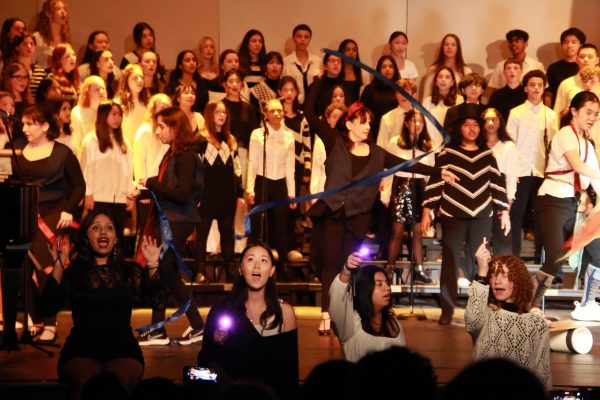Inside the Planning of a COVID School Year
January 10, 2021
In the beginning of the 2020-2021 school year, the persistent presence of the COVID-19 pandemic pushed school administrators to grapple with an important question: how do we ensure that students receive a proper education while protecting their health and safety? It’s a question that Lexington High School administrators, led by superintendent Dr. Julie Hackett, began to answer in May of 2020 with a team of district-wide department leaders.
While the planning process began during the 2019-2020 school year, official plans were released beginning at the end of June. These plans, released on June 30th, were informed by community feedback, including parent and student surveys and public chats open for anyone to participate in. This careful accumulation of research allowed for the creation of a plan that, while not fully comprehensive, offered a preliminary view of how the rest of the year would be shaped.
The plan offered two possibilities for students: a full remote option (dubbed the Remote Learning Academy), and the Hybrid Learning Model, in which two cohorts of students alternate between being in school and learning from home. A full return to school was not considered in fear of a spike of COVID-19 cases. Throughout the planning process, the implementation of health and safety measures was stressed. Initially, the proposed plans for the school’s reopening all exceeded the state’s mandates.
On July 21st, a revised version of this plan, shaped by additional conversations with community stakeholders, was released. These discussions were attended by teachers, parents, and students; while parents and students mostly inquired about the structure of the hybrid and remote plans, teachers’ main concerns were about the safety protocols.
The plan offered further details regarding school arrangements. Notably, the revisions loosened the requirements for students wanting to attend school fully remotely: students no longer had to provide medical documentation of immunocompromised family members, and could switch plans throughout the academic year. In addition, more detailed day-to-day schedules were shared.
The next update from the school came on Aug. 10 in the form of three question and answer documents: one for students, parents, and staff. The Q&As, written by Dr. Hackett as well as other members of the scheduling team, laid out several key points not covered in the two official back-to-school blueprints. According to the family Q&A, one such clarification was an earlier dismissal time for LHS students (12:30 p.m.) to “avoid the logistical challenges associated with lunch.”
In the midst of this, the Lexington School Committee held virtual meetings to discuss the released plans and the best approaches to deal with the complications of restarting school during COVID-19. On Aug. 29, the Lexington School Committee met to finalize decisions on schedules and the hybrid and remote plans.
At the beginning of this meeting, teachers and parents were given an opportunity to voice their concerns. Many teachers opposed the hybrid model and supported the remote option.
“Full remote learning will allow teachers to fully engage students using a variety of tools specialized for virtual classrooms.” Laura Sheppard-Brick, an LHS math teacher, said at the meeting. However, parent support fell on the hybrid model.
“If we don’t go back now, when will we go back?” Kip Connor, a Lexington parent, said.
At this meeting, LHS Principal Andrew Stephens, Assistant Principal Andy Baker, and Math department head Kevin Kelly were able to present the proposed LHS schedules for the year.
The key decisions made in the schedule considered the health and safety protocols as well as the integration of hybrid and remote students. The number of blocks in a day were decreased and their lengths’ increased to reduce the number of groups hybrid students interact with on a daily basis. Under the new schedule, students will only be in contact with around 3.2 groups of other students in a single day.
To maintain synchronicity between students in the Hybrid and RLA options, the schedule was designed so both groups of students would be following the same schedule.
“There really isn’t much difference between what is happening between in-school hybrid students, remote-hybrid students, or fully-remote students over the course of their schedule,” Stephens said.
After hearing these presentations and the ensuing discussion on the schedules and how schools will operate, the Lexington School Committee voted on whether a phased-in approach to the hybrid model or a full remote start should be initiated. The phase-in hybrid approach was approved, with Eileen Jay, the Vice-Chair of the committee, as the only holdout.
As the year progresses, Lexington High School administrators will continue to solicit feedback from the community on ways to improve the learning experience.




